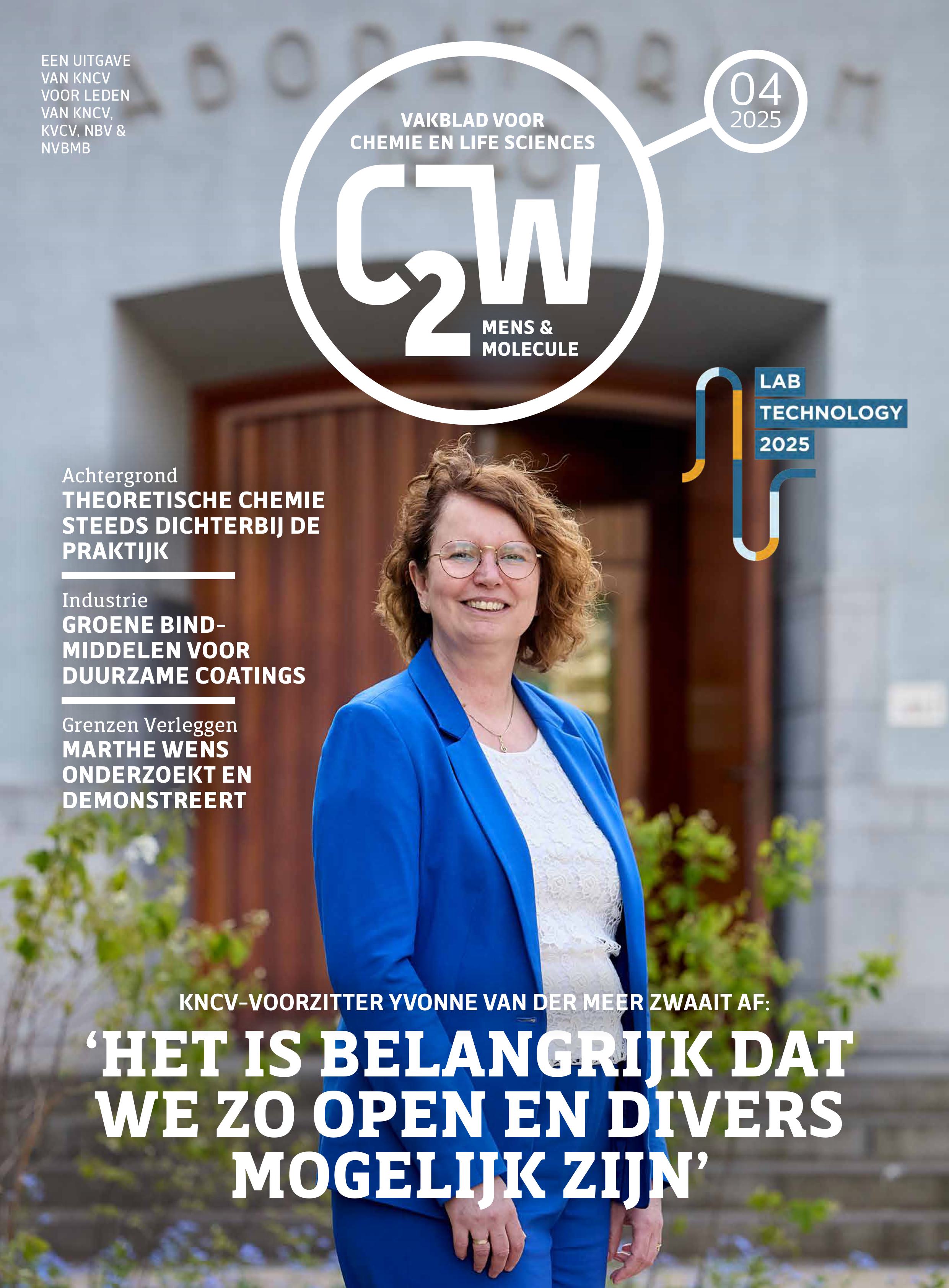Would you like to add an event to this list? Simply register your event using this form.
Heterogeneously catalyzed chemoselective reduction of unsaturated nitro and carbonyl compounds

3001 Leuven, België
Promovendus/a: Eva Plessers
Promotor(en): Prof. dr. ir. Maarten Roeffaers, Prof. dr. ir. Dirk De Vos
Allylic alcohols and functionalized anilines are industrially valuable flavouring and fragrance compounds and important intermediates for pharmaceuticals, polymers and other fine chemicals. These compounds can be synthesised via chemoselective reduction of unsaturated aldehydes and nitro compounds. Reduction of the olefinic group yields saturated aldehydes and nitro compounds, whereas hydrogenation of the carbonyl and nitro group produce allylic alcohols and unsaturated amines. Typically, this reduction is performed under high hydrogen pressure conditions with supported metal catalysts, alternatively transfer hydrogenation with an alcohol as hydride donor and a Lewis acid catalyst can be employed. The former process is most widely applicable, but is not straightforward since olefins are often preferentially reduced, due to thermodynamic and kinetic reasons. To direct selectivity towards the desired products there is thus a strong motivation to develop chemoselective supported metal reduction catalysts. Platinum group metals (Pt, Pd, Ir, Rh, Os and Ru; PGMs) are typically used, but often require complex doping schemes. Silver on the contrary, has a very high intrinsic chemoselectivity towards unsaturated products in reductions of polyfunctional molecules and will thus be explored in this work as chemoselective reduction catalyst.
Metal nanoparticle catalysts used for the chemoselective reduction are typically supported on porous materials like silica, alumina and carbon. These supports stabilise the metal nanoparticles preventing their aggregation and hence loss in activity and/or selectivity. Though more interestingly the pores of these support can also be used to control the size of nanoparticles via pore confined synthesis strategies. In this work, chemoselective hydrogenation with a commonly used silver on silica catalyst is investigated first, whereafter the development of a new chemoselective silver catalyst on an innovative material is described and the remarkable transfer hydrogenation catalysing power of this support.
In the first experimental chapter (Chapter 2), the chemoselective reduction of 4-nitrostyrene using a silver on silica catalyst, prepared via the standard incipient wetness (IWI) procedure, is explored in detail. In IWI a porous support is filled with a metal precursor solution that equals the pore volume of the support. After drying and calcination the final supported metal nanoparticle catalyst is obtained. In this work optical microscopy is used as the most important characterisation technique and proved to be a convenient tool to directly interlink the structural and compositional information and hydrogenation performance of individual support particles. This novel correlative imaging approach revealed for the first time how incipient wetness impregnation led to 10-fold variations in silver loading between individual submillimetre-sized silica support granules. Furthermore, this heterogeneity had a profound impact on the catalytic performance, 100-fold interparticle variations in normalized catalytic performance were discovered for the chemoselective 4-nitrostyrene reduction between granules of the same batch. This detailed study revealed the optimal silver loading and based on this information the normalized yield was increased by 38 %.
To unravel the origin of this interparticle heterogeneity the impregnation process was dissected into the individual synthesis steps (impregnation, drying & calcination) and the pre-impregnated support, and investigated in detail using optical microscopy (Chapter 3). Examination of the influence of each elementary step on the resulting silver distribution pointed out that every step introduces a minimal degree of interparticle heterogeneity, but the optimised drying procedure has the largest impact on the heterogeneity. More specifically, the position of a support granule in the stagnant drying bed has a large influence on the resulting colour and thus silver distribution. Moving from a static to a fluidized-bed drying resulted in a strongly improved silver loading on the different support granules. This optimised drying procedure is easy to implement in the lab and on even larger scales.
The importance of generating well-defined and stable silver nanoparticles was an incentive to look into pore confinement in metal organic frameworks (MOFs). These results are described in Chapter 4. Silver nanoparticles were successfully synthesized by pore confinement in UiO-66, a widely used zirconium-based metal-organic framework. A recyclable 10 wt% Ag/UiO-66 catalyst reached complete conversion of cinnamaldehyde with 66 % selectivity for cinnamyl alcohol in the inert solvent N,N-dimethylacetamide with high hydrogen pressure (30-50 bar). Surprisingly, pure UiO-66 without silver reached complete conversion with > 90 % selectivity in isopropyl alcohol solvent, even in absence of hydrogen. The Lewis acid sites of the Zr-support catalyse transfer hydrogenation of cinnamaldehyde with isopropyl alcohol, a procedure called Meerwein-Ponndorf-Verley (MPV) reduction. The substrate scope of this MPV reduction was successfully extended to citral and carvone, two α,β-unsaturated carbonyl compounds that are harder to reduce selectively. Further catalyst optimisation was possible via the introduction of a NO2-functional group into the UiO-66 linker, increasing the Lewis acidity.
Based on the high activity and chemoselectivity in the reduction of unsaturated carbonyl compounds using the Lewis acid Zr-sites in UiO-66, a large pore Zr-based MOF, MOF-808-P, was explored as MPV reduction catalyst with isopropyl alcohol as solvent and hydride donor. These large pores of MOF-808-P facilitate the formation of the six-membered ring transition state and more importantly, the Zr-atom in the MOF-cluster is undercoordinated which should lead to an increased number and strength of the Lewis acid sites compared to UiO-66. MOF-808-P catalysed MPV reduction obtained already 99 % cinnamyl alcohol yield after only 2 h (Chapter 5). The highly active MOF-808-P was furthermore a good catalyst for the selective reduction of more challenging substrates such as carvone and β-ionone. The activity for the former was 20-fold increased with respect to UiO-66. Two strategies were successfully used to shift the equilibrium reaction towards the desired allylic alcohol products: 1) evaporation of formed acetone when using isopropyl alcohol and 2) the use of the more strongly reducing 1-indanol. Via these approaches the carveol yield was increased to > 70 %.
All Dates
- 2016-08-17 13:30
Powered by iCagenda

